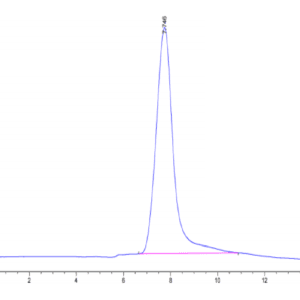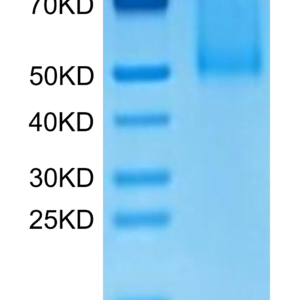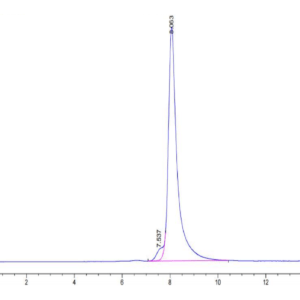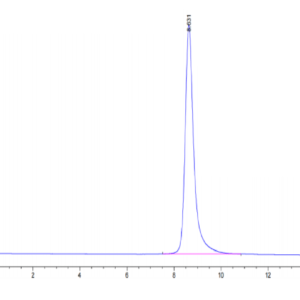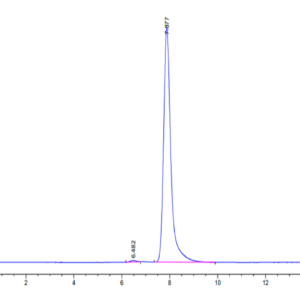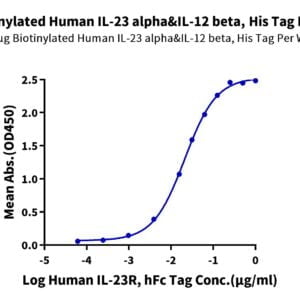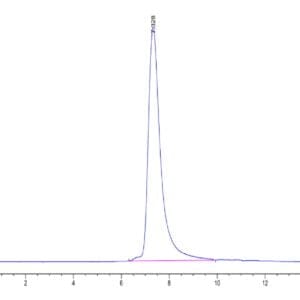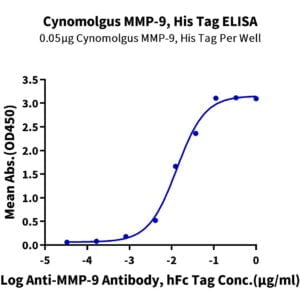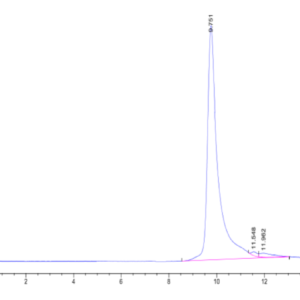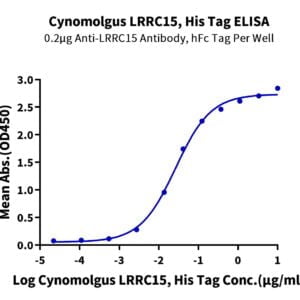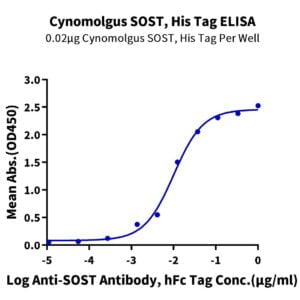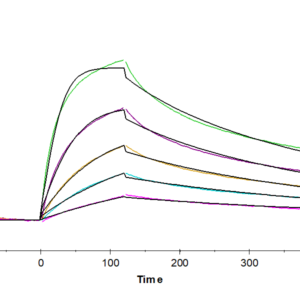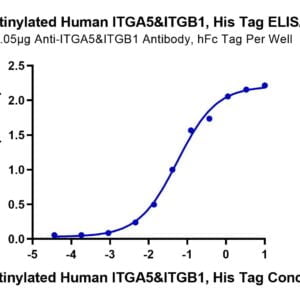| Weight | 1 lbs |
|---|---|
| Dimensions | 9 × 5 × 2 in |
| accession | P05156 |
| express system | HEK293 |
| product tag | C-His |
| purity | > 95% as determined by Tris-Bis PAGE;> 95% as determined by HPLC |
| background | Complement factor I (CFI) is a serine protease which plays a key role in the modulation of complement system and the induced-fit factor responsible for controlling the complement-mediated processes. |
| molecular weight | The protein has a predicted MW of 64.58 kDa. Due to enzyme lysis and glycosylation, the protein migrates to 75-95 kDa based on Tris-Bis PAGE result. |
| available size | 100 µg, 500 µg |
| endotoxin | Less than 1EU per μg by the LAL method. |
Human Complement factor I Protein 2943
$315.00 – $1,050.00
Summary
- Expression: HEK293
- Pure: Yes (HPLC)
- Amino Acid Range: Lys19-Val583
Human Complement factor I Protein 2943
| protein |
|---|
| Size and concentration 100, 500µg and lyophilized |
| Form Lyophilized |
| Storage Instructions Valid for 12 months from date of receipt when stored at -80°C. Recommend to aliquot the protein into smaller quantities for optimal storage. Please minimize freeze-thaw cycles. |
| Storage buffer Shipped at ambient temperature. |
| Purity > 95% as determined by Tris-Bis PAGE |
| target relevance |
|---|
| Complement factor I (CFI) is a serine protease which plays a key role in the modulation of complement system and the induced-fit factor responsible for controlling the complement-mediated processes. |
| Protein names Complement factor I (EC 3.4.21.45) (C3B/C4B inactivator) [Cleaved into: Complement factor I heavy chain; Complement factor I light chain] |
| Gene names CFI,CFI IF |
| Protein family Peptidase S1 family |
| Mass 9606Da |
| Function Trypsin-like serine protease that plays an essential role in regulating the immune response by controlling all complement pathways. Inhibits these pathways by cleaving three peptide bonds in the alpha-chain of C3b and two bonds in the alpha-chain of C4b thereby inactivating these proteins (PubMed:17320177, PubMed:7360115). Essential cofactors for these reactions include factor H and C4BP in the fluid phase and membrane cofactor protein/CD46 and CR1 on cell surfaces (PubMed:12055245, PubMed:2141838, PubMed:9605165). The presence of these cofactors on healthy cells allows degradation of deposited C3b by CFI in order to prevent undesired complement activation, while in apoptotic cells or microbes, the absence of such cofactors leads to C3b-mediated complement activation and subsequent opsonization (PubMed:28671664). |
| Catalytic activity BINDING 239; /ligand="Ca(2+)"; /ligand_id="ChEBI:CHEBI:29108"; /ligand_label="1"; /evidence="ECO:0000269|PubMed:21768352, ECO:0007744|PDB:2XRC"; BINDING 242; /ligand="Ca(2+)"; /ligand_id="ChEBI:CHEBI:29108"; /ligand_label="1"; /evidence="ECO:0000269|PubMed:21768352, ECO:0007744|PDB:2XRC"; BINDING 244; /ligand="Ca(2+)"; /ligand_id="ChEBI:CHEBI:29108"; /ligand_label="1"; /evidence="ECO:0000269|PubMed:21768352, ECO:0007744|PDB:2XRC"; BINDING 246; /ligand="Ca(2+)"; /ligand_id="ChEBI:CHEBI:29108"; /ligand_label="1"; /evidence="ECO:0000269|PubMed:21768352, ECO:0007744|PDB:2XRC"; BINDING 252; /ligand="Ca(2+)"; /ligand_id="ChEBI:CHEBI:29108"; /ligand_label="1"; /evidence="ECO:0000269|PubMed:21768352, ECO:0007744|PDB:2XRC"; BINDING 253; /ligand="Ca(2+)"; /ligand_id="ChEBI:CHEBI:29108"; /ligand_label="1"; /evidence="ECO:0000269|PubMed:21768352, ECO:0007744|PDB:2XRC"; BINDING 276; /ligand="Ca(2+)"; /ligand_id="ChEBI:CHEBI:29108"; /ligand_label="2"; /evidence="ECO:0000269|PubMed:21768352, ECO:0007744|PDB:2XRC"; BINDING 279; /ligand="Ca(2+)"; /ligand_id="ChEBI:CHEBI:29108"; /ligand_label="2"; /evidence="ECO:0000269|PubMed:21768352, ECO:0007744|PDB:2XRC"; BINDING 281; /ligand="Ca(2+)"; /ligand_id="ChEBI:CHEBI:29108"; /ligand_label="2"; /evidence="ECO:0000269|PubMed:21768352, ECO:0007744|PDB:2XRC"; BINDING 283; /ligand="Ca(2+)"; /ligand_id="ChEBI:CHEBI:29108"; /ligand_label="2"; /evidence="ECO:0000269|PubMed:21768352, ECO:0007744|PDB:2XRC"; BINDING 289; /ligand="Ca(2+)"; /ligand_id="ChEBI:CHEBI:29108"; /ligand_label="2"; /evidence="ECO:0000269|PubMed:21768352, ECO:0007744|PDB:2XRC"; BINDING 290; /ligand="Ca(2+)"; /ligand_id="ChEBI:CHEBI:29108"; /ligand_label="2"; /evidence="ECO:0000269|PubMed:21768352, ECO:0007744|PDB:2XRC" |
| Subellular location Secreted, extracellular space. Secreted . |
| Tissues Expressed in the liver by hepatocytes (PubMed:6327681). Also present in other cells such as monocytes, fibroblasts or keratinocytes (PubMed:17320177, PubMed:6444659). |
| Structure Heterodimer of a light and heavy chains; disulfide-linked. The fully processed and mature protein circulates as a zymogen, and is allosterically activated by substrate-induced remodeling of the active site (PubMed:21768352). Interacts with C3b (PubMed:28671664, PubMed:9291131). Interacts with complement factor H (PubMed:28671664, PubMed:9291131).; (Microbial infection) Interacts with Staphylococcus aureus clumping factor A/ClfA; this interaction enhances cleavage of C3b into iC3b by CFI. |
| Target Relevance information above includes information from UniProt accession: P05156 |
| The UniProt Consortium |
Data
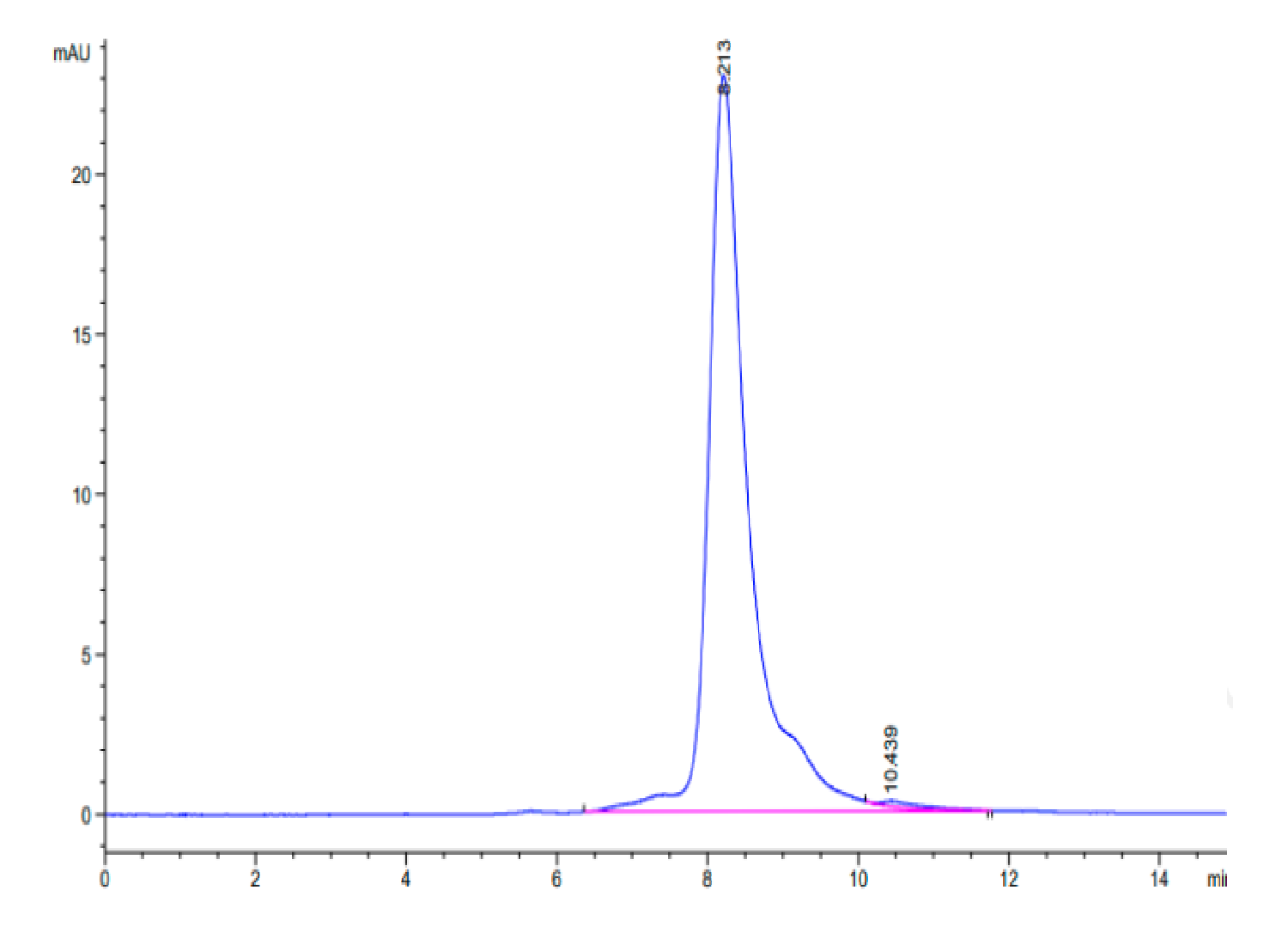 |
| The purity of Human Complement factor I is greater than 95% as determined by SEC-HPLC. |
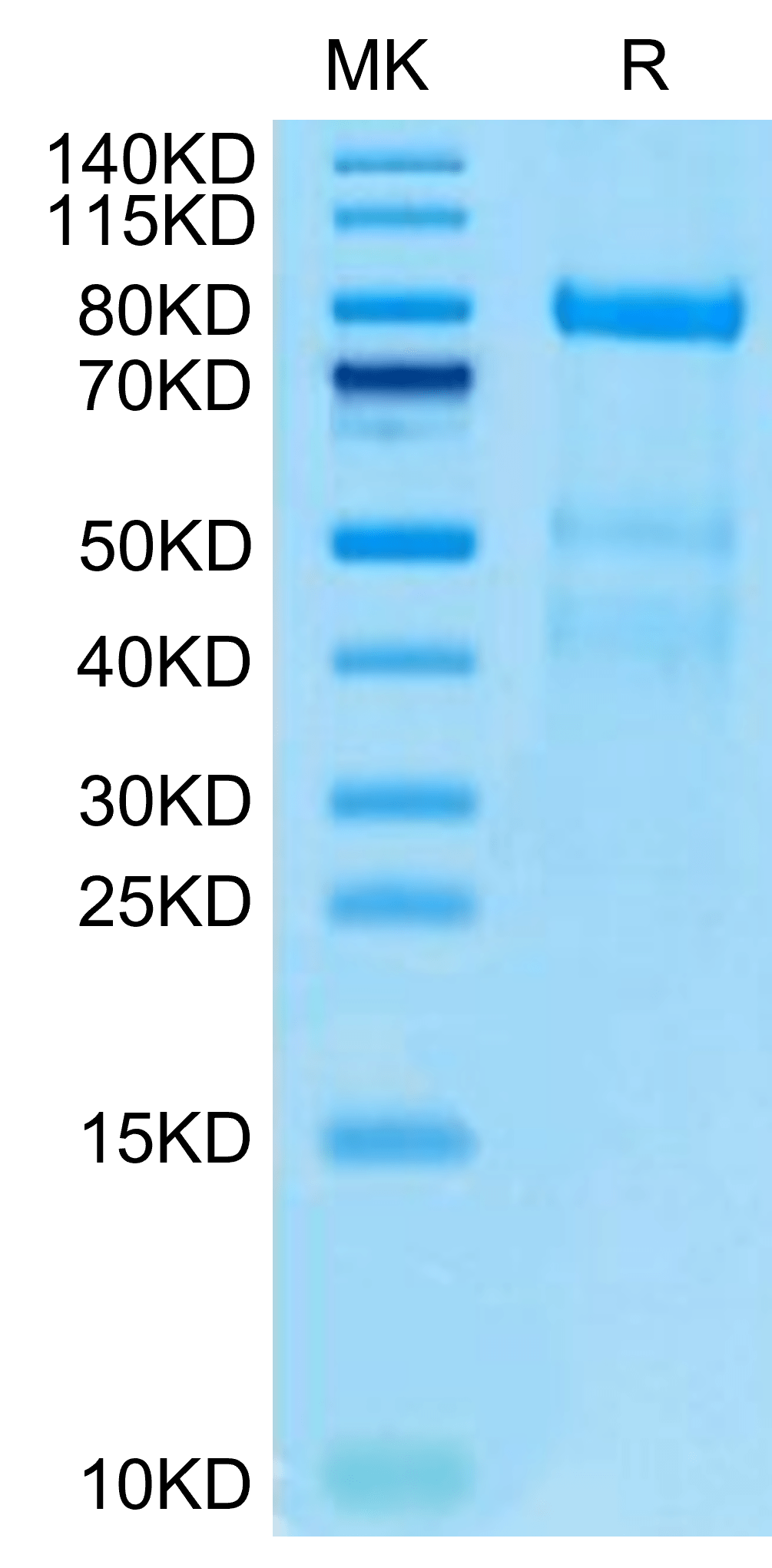 |
| Human Complement factor I on Tris-Bis PAGE under reduced condition. The purity is greater than 95%. |
Publications
Publications
| pmid | title | authors | citation |
|---|---|---|---|
| We haven't added any publications to our database yet. | |||
Protocols
| relevant to this product |
|---|
Documents
| # | ||
|---|---|---|
| Please enter your product and batch number here to retrieve product datasheet, SDS, and QC information. | ||
